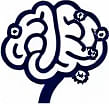Choice Architecture: Shaping Decisions Through Mental Models
 by Shanie Goodwin
by Shanie Goodwin
Choice architecture influences how people make decisions by structuring options. This mental model, rooted in behavioral psychology, helps in business and daily life by guiding choices subtly and effectively. Learn its principles and applications for better outcomes.

Choice architecture serves as a key mental model in cognitive development, offering ways to influence decisions without restricting freedom. This approach structures the environment where choices occur, making certain options more appealing.
In its core, choice architecture draws from behavioral psychology, where small changes in presentation can lead to significant shifts in behavior. For instance, arranging options in a specific order or highlighting defaults can guide people toward better decisions. Choice architecture operates by leveraging human tendencies, such as opting for the path of least resistance.
One fundamental aspect involves defaults, which are pre-selected options that individuals often stick with due to inertia. In business strategies, companies use this to encourage customer loyalty, like setting automatic renewals for services. This method ensures that positive behaviors become the norm.
Another element is framing, where the way information is presented alters perceptions. For example, describing a product as "90% fat-free" rather than "10% fat" can make it more attractive. Framing plays a crucial role in marketing, helping professionals shape consumer preferences subtly.
To apply choice architecture in everyday scenarios, consider education. Teachers might organize classroom activities to promote engagement, such as placing engaging materials at eye level. This fosters a learning environment that supports cognitive growth.
In professional settings, leaders implement choice architecture to enhance team performance. By designing workflows that minimize distractions, managers can improve productivity. For example, limiting email notifications during focused work periods allows employees to concentrate better.
The benefits extend to public policy as well. Governments use this mental model to promote healthier lifestyles, such as placing healthier food options at the front of cafeterias. Public policy applications demonstrate how subtle designs can lead to societal improvements.
Practical Steps for Implementation
To incorporate choice architecture into personal life, start by identifying key decision points. Begin with simple adjustments, like organizing your workspace to prioritize important tasks. This creates habits that align with long-term goals.
In teams, hold discussions to redesign processes. Use lists to outline potential changes:
- Evaluate current choice environments.
- Test small modifications, such as reordering options.
- Measure the impact on outcomes.
Such steps make the model accessible for lifelong learners seeking to refine their cognitive tools.
Real-world examples illustrate its effectiveness. In healthcare, appointment reminders via text messages increase attendance rates by reducing forgetfulness. Healthcare systems benefit from these interventions, improving patient adherence.
Businesses also see gains through targeted designs. Online retailers, for instance, use personalized recommendations to boost sales. By analyzing user data, they present relevant products first, enhancing the shopping experience.
Challenges arise when choice architecture is misused, potentially leading to manipulation. Ethical considerations are essential to ensure it serves the greater good. Professionals must balance influence with transparency.
For cognitive development, this mental model encourages self-awareness. Individuals can apply it to personal decisions, like budgeting finances by automating savings transfers. This builds discipline over time.
In summary, choice architecture provides a practical framework for shaping behaviors in psychology and business. By understanding its principles, curious minds can adopt strategies that lead to informed choices and growth.
